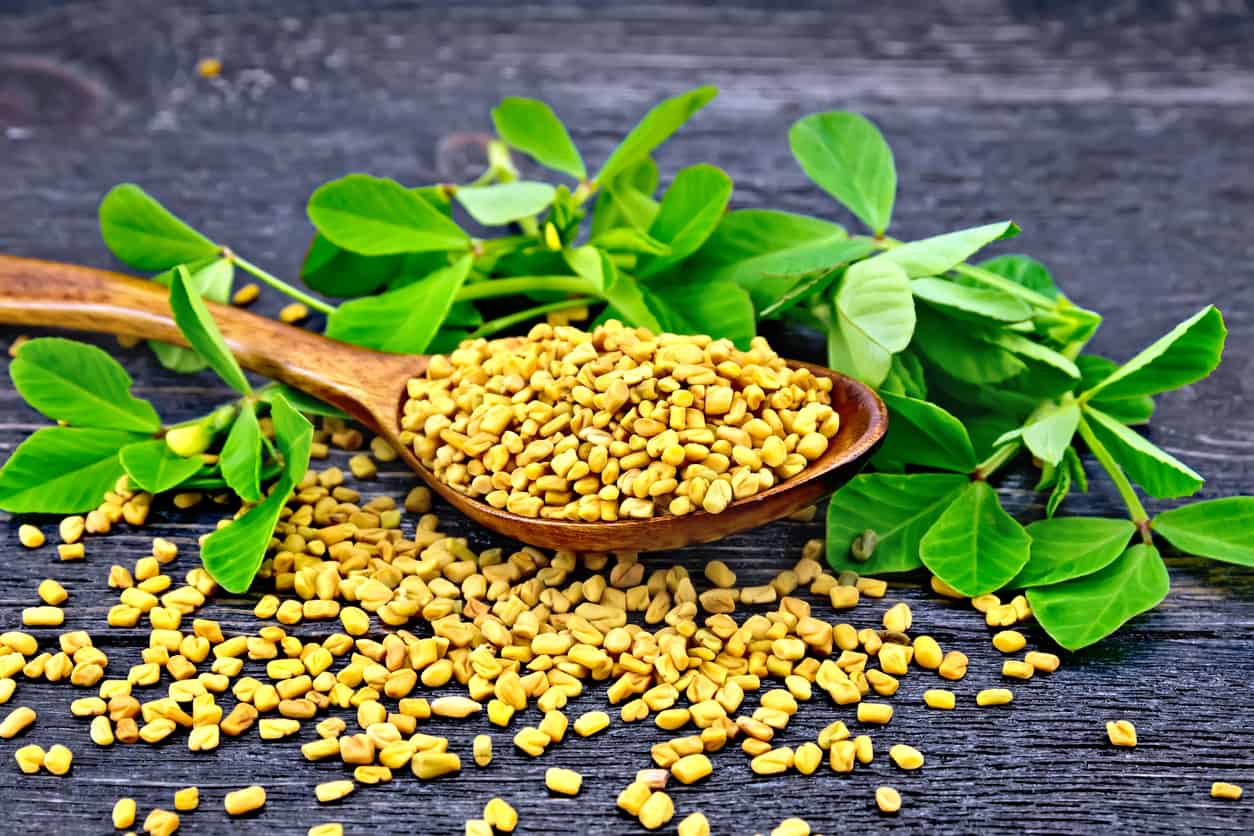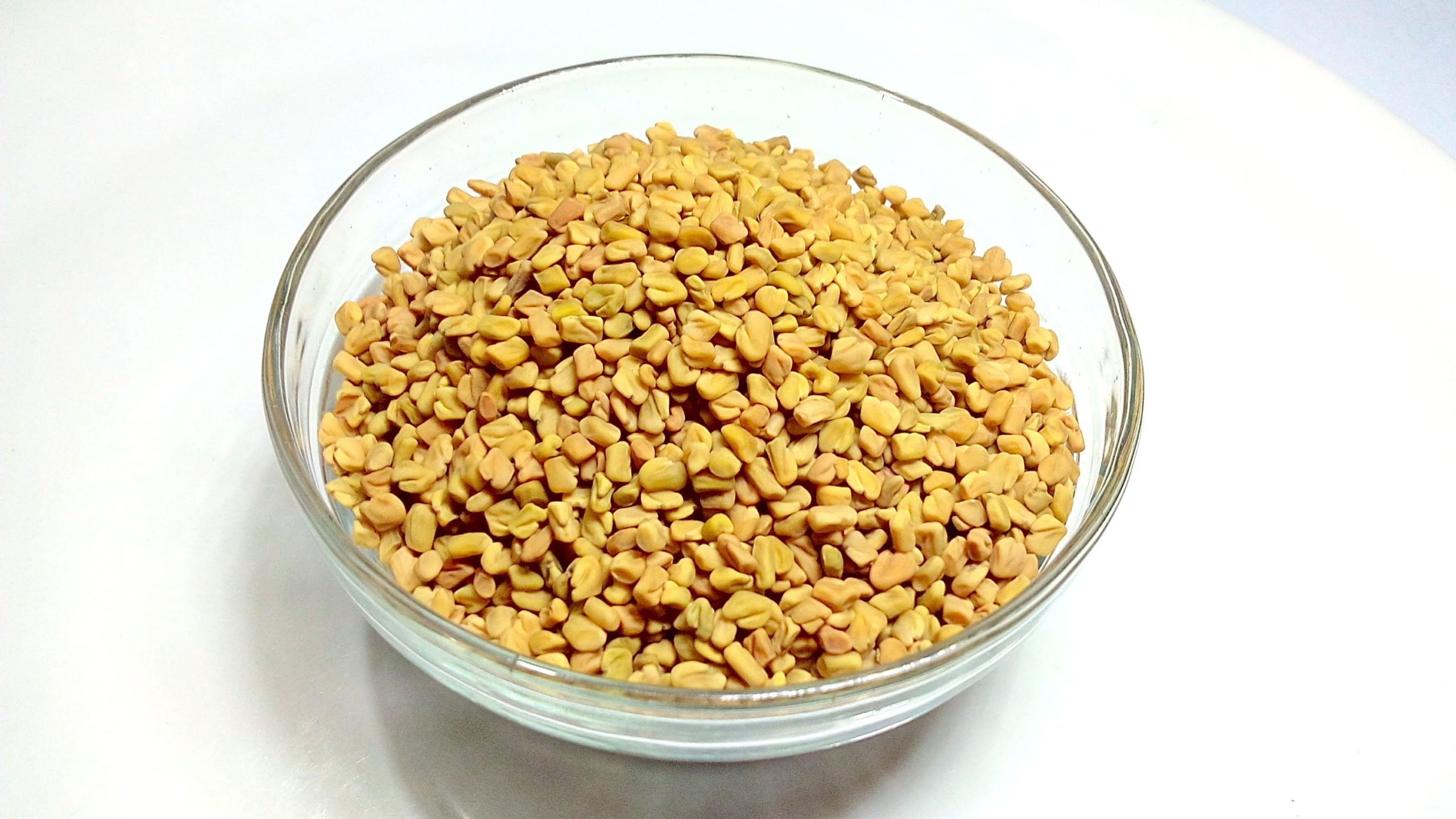
Women Fitness brings a complete resource on health benefits of fenugreek. It is an annual plant in the family Fabaceae, with leaves consisting of three small obovate to oblong leaflets. It is cultivated worldwide as a semiarid crop, and its seeds are a common ingredient in dishes from the Indian Subcontinent in South Asia.
Fenugreek is used as an herb (dried or fresh leaves), spice (seeds), and vegetable (fresh leaves, sprouts, and microgreens). Sotolon is the chemical responsible for fenugreek’s distinctive sweet smell.
In India, the Methi Ghatia snack is made out of lentils and fenugreek seeds. Cuboid-shaped, yellow- to amber-colored fenugreek seeds are frequently encountered in the cuisines of the Indian Subcontinent, used both whole and powdered in the preparation of pickles, vegetable dishes, daals, and spice mixes such as panch phoron and sambar powder. They are often roasted to reduce bitterness and enhance flavor.
Fresh fenugreek leaves are an ingredient in some Indian curries. Sprouted seeds and microgreens are used in salads. When harvested as microgreens, fenugreek is known as samudra methi in Maharashtra, especially in and around Mumbai, where it is often grown near the sea in the sandy tracts, hence the name samudra, “ocean” in Sanskrit. Samudra methi is also grown in dry river beds in the Gangetic plains. When sold as a vegetable in India, the young plants are harvested with their roots still attached and sold in small bundles in the markets and bazaars. Any remaining soil is washed off to extend their shelf life.
In Turkish cuisine, fenugreek is used for making a paste known as çemen. Cumin, black pepper, and other spices are added into it, especially to make pastırma. In Persian cuisine, fenugreek leaves are called ‘shanbalile’. They are the key ingredient and one of several greens incorporated into ghormeh sabzi and eshkeneh, often said to be the Iranian national dishes. In Egyptian cuisine, peasants in Upper Egypt add fenugreek seeds and maize to their pita bread to produce aish merahrah, a staple of their diet.

Fenugreek is used in Eritrean and Ethiopian cuisine. The word for fenugreek in Amharic is abesh (or abish), and the seed is used in Ethiopia as a natural herbal medicine in the treatment of diabetes. Yemenite Jews following the interpretation of Rabbi Salomon Isaacides, Rashi, believe fenugreek, which they call hilbeh, hilba, helba, or halba is the Talmudic rubia . They use it to produce a sauce also called hilbeh, reminiscent of curry. It is consumed daily and ceremonially during the meal of the first and/or second night of the Jewish New Year, Rosh Hashana.
It is advised by lactation advisers and used by breastfeeding mothers to help stimulate milk production and supply and it is also supposed to help either gain or reduce weight. However there is not enough evidence to support these claims.
Nutritional profile
Fenugreek seeds and leaves are strongly aromatic and flavorful. Seeds are bitter in taste but lose their bitterness if roasted slightly. They are rich in vitamins such as thiamin, folic acid, riboflavin, niacin, vitamins A, B6, and C, and are a storehouse of minerals such as copper, potassium, calcium, iron, selenium, zinc, manganese, and magnesium. Fenugreek leaves are a rich source of vitamin K as well.
Fenugreek leaves contain these nutrients per 100 g of edible portion:
- Carbohydrates: 6.0 g
- Protein: 4.4 g
- Fat: 0.9 g
- Calcium: 395 mg
- Phosphorus: 51 mg
- Iron: 1.93 mg
- Total energy: 49 kcal
Fenugreek sprouts, cultivated from contaminated seeds imported from Egypt in 2009 and 2010, were implicated but not definitively linked to the 2011 outbreak of Escherichia coli in Germany and France
Health Benefits of Fenugreek
Fenugreek is a plant. The seeds are used to make medicine. Fenugreek is used for many conditions, but so far, there isn’t enough scientific evidence to determine whether or not it is effective for any of them.
Fenugreek is used for digestive problems such as loss of appetite, upset stomach, constipation, and inflammation of the stomach (gastritis). It is also used for conditions that affect heart health such as “hardening of the arteries” (atherosclerosis) and for high blood levels of certain fats including cholesterol and triglycerides.
Fenugreek is used for kidney ailments, a vitamin deficiency disease called beriberi, mouth ulcers, boils, bronchitis, infection of the tissues beneath the surface of the skin (cellulitis), tuberculosis, chronic coughs, chapped lips, baldness, cancer, and lowering blood sugar in people with diabetes.
Some men use fenugreek for hernia, erectile dysfunction (ED), and other male problems.
Increases Breast Milk- Women who are breast-feeding sometimes use fenugreek to promote milk flow. Fenugreek is used as a galactagogue by nursing mothers to increase inadequate breast milk supply. This is evidenced by a study which found that consumption of herbal tea containing fenugreek seeds enhanced breast milk production in mothers and facilitated infant birth weight regain in early postnatal days.
Prevents Diabetes – An unusual amino acid (4HO-Ile), so far found only in fenugreek, has possible anti-diabetic properties such as enhancing insulin secretion under hyperglycemic conditions, and increasing insulin sensitivity. Iranian researchers from Qom University of Medical Science suggest the potential of 4HO-Ile as an adjunct to diabetes treatment for type 1 as well as type 2 diabetes.
Reduces Cholesterol – Fenugreek contains saponins that help reduce the body’s absorption of cholesterol from fatty foods. Some studies also indicate saponins to have a role to play in reducing the body’s production of cholesterol, especially the LDL levels. For example, Reddy and Srinivasan from the Central Food Technological Research Institute, CSIR, Mysore, India, found that fenugreek helped regress existing cholesterol gallstones in mice. Further, they claimed that fenugreek could significantly reduce cholesterol concentration.
Protects from Cancer – Studies have shown that the fibers in fenugreek help prevent certain cancers. For example, researchers at Rajiv Gandhi Center for Biotechnology, Thiruvananthapuram, found that fenugreek has estrogenic effects and could be a possible alternative to hormone replacement therapy (HRT). Other studies have shown that saponins and mucilage in fenugreek bind to toxins in the food and flush them out, thus protecting the mucus membrane of the colon from cancers.
More Benefits
- Increases Breast Milk- Women who are breast-feeding sometimes use fenugreek to promote milk flow. Fenugreek is used as a galactagogue by nursing mothers to increase inadequate breast milk supply. This is evidenced by a study which found that consumption of herbal tea containing fenugreek seeds enhanced breast milk production in mothers and facilitated infant birth weight regain in early postnatal days.
- Prevents Diabetes – An unusual amino acid (4HO-Ile), so far found only in fenugreek, has possible anti-diabetic properties such as enhancing insulin secretion under hyperglycemic conditions, and increasing insulin sensitivity. Iranian researchers from Qom University of Medical Science suggest the potential of 4HO-Ile as an adjunct to diabetes treatment for type 1 as well as type 2 diabetes.
- Reduces Cholesterol – Fenugreek contains saponins that help reduce the body’s absorption of cholesterol from fatty foods. Some studies also indicate saponins to have a role to play in reducing the body’s production of cholesterol, especially the LDL levels. For example, Reddy and Srinivasan from the Central Food Technological Research Institute, CSIR, Mysore, India, found that fenugreek helped regress existing cholesterol gallstones in mice. Further, they claimed that fenugreek could significantly reduce cholesterol concentration.
- Protects from Cancer – Studies have shown that the fibers in fenugreek help prevent certain cancers. For example, researchers at Rajiv Gandhi Center for Biotechnology, Thiruvananthapuram, found that fenugreek has estrogenic effects and could be a possible alternative to hormone replacement therapy (HRT). Other studies have shown that saponins and mucilage in fenugreek bind to toxins in the food and flush them out, thus protecting the mucus membrane of the colon from cancers.
Fenugreek is sometimes used as a poultice. That means it is wrapped in cloth, warmed and applied directly to the skin to treat local pain and swelling (inflammation), muscle pain, pain and swelling of lymph nodes (lymphadenitis), pain in the toes (gout), wounds, leg ulcers, and eczema.
The taste and odor of fenugreek resembles maple syrup, and it has been used to mask the taste of medicines.
In foods, fenugreek is included as an ingredient in spice blends. It is also used as a flavoring agent in imitation maple syrup, foods, beverages, and tobacco.
In manufacturing, fenugreek extracts are used in soaps and cosmetics.
Fenugreek leaves are eaten in India as a vegetable.
Fenugreek Side Effects
• In large doses, fenugreek may cause birth-defects because of its teratogenic potential. It would be prudent to avoid fenugreek supplementation during pregnancy.
• Fenugreek seeds can cause internal bleeding.
• Skin irritation and allergy has also been reported with fenugreek. Severe allergy symptoms include chest pain, facial swelling, and difficulty breathing or swallowing.
Medications for diabetes (Antidiabetes drugs) interacts with Fenugreek. Fenugreek might decrease blood sugar. Diabetes medications are also used to lower blood sugar. Taking fenugreek along with diabetes medications might cause your blood sugar to go too low. Monitor your blood sugar closely. The dose of your diabetes medication might need to be changed.
How Fenugreek Works
Fenugreek appears to slow absorption of sugars in the stomach and stimulate insulin. Both of these effects lower blood sugar in people with diabetes. Some research shows that consuming fenugreek, mixed with food during a meal, seems to lower blood sugar levels after the meal in people with type 1 or type 2 diabetes.
Women Fitness hope this resource on fenugreek helps in bringing to our readers a deeper insight into it’s health benefits.
Videos